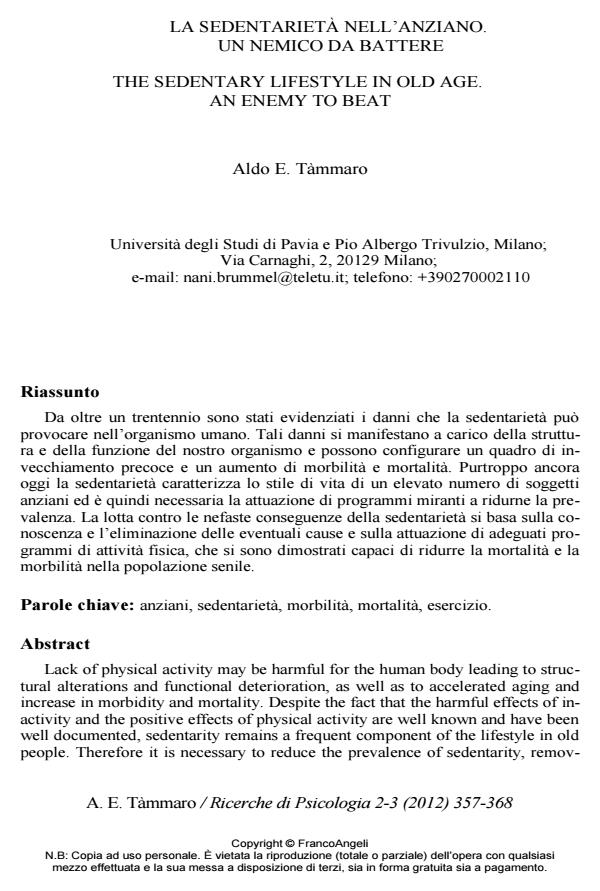La sedentarietà nell’anziano. Un nemico da battere
Titolo Rivista RICERCHE DI PSICOLOGIA
Autori/Curatori Aldo E. Tàmmaro
Anno di pubblicazione 2013 Fascicolo 2012/2-3
Lingua Italiano Numero pagine 12 P. 357-368 Dimensione file 192 KB
DOI 10.3280/RIP2012-002014
Il DOI è il codice a barre della proprietà intellettuale: per saperne di più
clicca qui
Qui sotto puoi vedere in anteprima la prima pagina di questo articolo.
Se questo articolo ti interessa, lo puoi acquistare (e scaricare in formato pdf) seguendo le facili indicazioni per acquistare il download credit. Acquista Download Credits per scaricare questo Articolo in formato PDF

FrancoAngeli è membro della Publishers International Linking Association, Inc (PILA)associazione indipendente e non profit per facilitare (attraverso i servizi tecnologici implementati da CrossRef.org) l’accesso degli studiosi ai contenuti digitali nelle pubblicazioni professionali e scientifiche
Da oltre un trentennio sono stati evidenziati i danni che la sedentarieta puo provocare nell’organismo umano. Tali danni si manifestano a carico della struttura e della funzione del nostro organismo e possono configurare un quadro di invecchiamento precoce e un aumento di morbilita e mortalita. Purtroppo ancora oggi la sedentarieta caratterizza lo stile di vita di un elevato numero di soggetti anziani ed e quindi necessaria la attuazione di programmi miranti a ridurne la prevalenza. La lotta contro le nefaste conseguenze della sedentarieta si basa sulla conoscenza e l’eliminazione delle eventuali cause e sulla attuazione di adeguati programmi di attivita fisica, che si sono dimostrati capaci di ridurre la mortalita e la morbilita nella popolazione senile.
Parole chiave:Anziani, sedentarieta, morbilita, mortalita, esercizio.
Aldo E. Tàmmaro, La sedentarietà nell’anziano. Un nemico da battere in "RICERCHE DI PSICOLOGIA " 2-3/2012, pp 357-368, DOI: 10.3280/RIP2012-002014